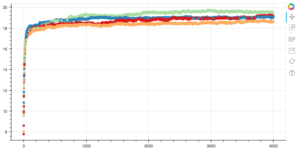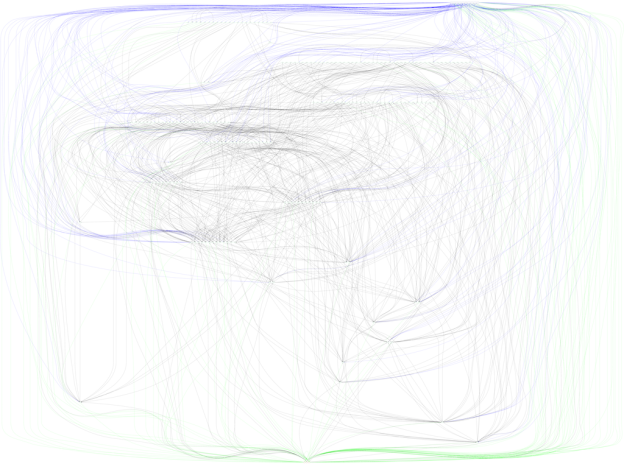Bokeh (https://bokeh.pydata.org/en/latest/) has been on my radar for some time as I move my data processing primarily to Jupyter notebooks. The look and feel of the plots have sensible defaults and generally are visually pleasing without too much customization. Compared to matplotlib, I find that I need to do much less customization to get my final product.
Unfortunately, sometimes the process of generating a plot isn’t a one-to-one mapping with my prior experiences. One such area of difficulty recently was generating a plot with four treatments, coloring each group of circles independently. After much trial and error, the following code generated a rough plot I was happy with.
from bokeh.io import output_notebook
from bokeh.palettes import brewer
from bokeh.plotting import figure, show
import pandas
# Assumes df => data frame with columns: X_Data, Y_Data, Factor
# Create colors for each treatment
# Rough Source: http://bokeh.pydata.org/en/latest/docs/gallery/brewer.html#gallery-brewer
# Fine Tune Source: http://bokeh.pydata.org/en/latest/docs/gallery/iris.html
# Get the number of colors we'll need for the plot.
colors = brewer["Spectral"][len(df.Factor.unique())]
# Create a map between factor and color.
colormap = {i: colors[i] for i in df.Factor.unique()}
# Create a list of colors for each value that we will be looking at.
colors = [colormap[x] for x in df.Factor]
# Generate the figure.
output_notebook()
p = figure(plot_width=800, plot_height=400)
# add a circle renderer with a size, color, and alpha
p.circle(df['X_Data'], df['Y_Data'], size=5, color=colors)
# show the results
show(p)
The general process is to first get a color palette from bokeh.palettes.brewer. I selected the number of colors based on how many unique values existed in the Factor column. Then I created a map from the values in the column and the colors. Next, create a new list that maps each data point to a color, and use this when plotting using the circle call.
You should get something similar to the following figure based on what data you have to import. Enjoy!
(Bokeh 0.12.7)

